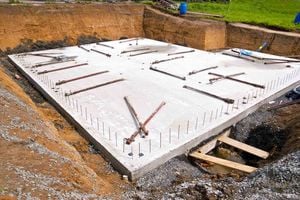Floodplains, often seen as hazardous zones due to their propensity for flooding, pose significant challenges for property owners. However, with strategic planning and proactive measures, properties within these areas can be transformed to enhance their resilience. This mitigates flood risks and can lead to the reversal of the property’s designation as being in a floodplain. We encountered this issue with our luxury listing at 151 Parkway Forest in Boone. The owners worked tirelessly to achieve a letter of map amendment and succeeded. (151 Parkway Forest FEMA Amendment Documentation). Here, we explore the steps and strategies that all property owners can implement to achieve this goal.
Understanding Floodplains and Their Designation
Floodplains are low-lying areas adjacent to rivers, lakes, and coastlines susceptible to flooding. The Federal Emergency Management Agency (FEMA) designates these areas based on historical data and predictive models to help manage flood risks. Properties within these zones often face higher insurance premiums, stringent building regulations, and potential property devaluation.
Proactive Measures to Enhance Resilience
-
Elevation of Structures:

Foundation of a Home
- Raising Foundations: Elevating a building’s foundation above the base flood elevation (BFE) is one of the most effective ways to reduce flood risk. This can involve lifting the entire structure and constructing a higher foundation.
- Fill and Compaction: Adding fill material to raise the ground level around the property can also help. However, this must be carefully planned to avoid unintended water displacement to neighboring areas.
-
Flood-Proofing Techniques:
- Dry Flood-Proofing: This involves making a building watertight up to a certain level using sealants, impenetrable barriers, and other methods to prevent water ingress.
- Wet Flood-Proofing: In cases where dry flood-proofing is not feasible, wet flood-proofing allows water to enter the building but minimizes damage by using water-resistant materials and design elements that facilitate easy cleaning and drying.
-
Improving Drainage Systems:
- Installing Sump Pumps: These can help remove accumulated water from basements and other low-lying areas.
- Enhanced Drainage Solutions: Implementing French drains, swales, and other landscape modifications can direct water away from the property.
-
Utilizing Natural Barriers:
- Restoring Wetlands: Wetlands act as natural sponges, absorbing excess water and reducing flood risks.
- Planting Vegetation: Deep-rooted plants and trees can help stabilize soil and absorb water, reducing runoff and erosion.
Achieving Redesignation
To effectively reverse the designation of a property in a floodplain, property owners must provide evidence that their proactive measures have significantly reduced the risk of flooding. This involves:
-
Documentation and Compliance:
- Maintain detailed records of all modifications, including engineering reports, construction plans, and materials.
- Ensure all measures comply with local building codes and FEMA guidelines.
-
Elevation Certificate:
- Obtain an elevation certificate from a licensed surveyor, which provides critical data on the elevation of the property’s lowest floor relative to the BFE.
-
Letter of Map Amendment (LOMA):
- Apply a LOMA to FEMA. This involves providing the elevation certificate and other relevant documentation demonstrating that the property is above the BFE and no longer at significant risk of flooding.
The Benefits of Proactive Measures
Taking proactive measures to enhance the resilience of properties in floodplains offers numerous benefits:
- Reduced Flood Risk: Enhancing the property’s ability to withstand flooding protects residents, reduces potential damage, and ensures quicker recovery after flood events.
- Lower Insurance Premiums: Properties less prone to flooding may qualify for lower flood insurance premiums, resulting in significant cost savings over time.
- Increased Property Value: A property perceived as safe and resilient against flooding can increase market value.
- Peace of Mind: Knowing that proactive measures are in place provides peace of mind to property owners and occupants.
Conclusion
Transforming a property in a designated floodplain into a resilient and safe haven requires strategic planning, investment in flood-proofing measures, and adherence to regulatory guidelines. By taking these proactive steps, property owners can not only mitigate the risks associated with flooding but also achieve the redesignation of their property, paving the way for a safer and more secure future.

